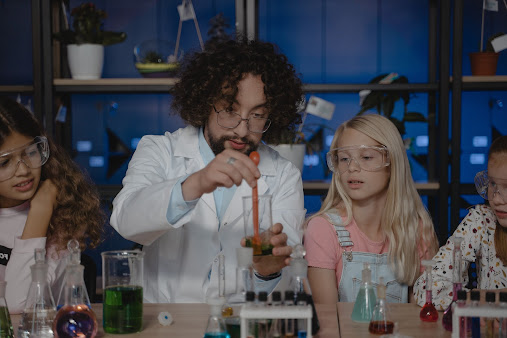Teaching children about germs is essential for their understanding of health and hygiene. Engaging middle school students in interactive science activities not only educates them about the microscopic world of germs but also empowers them to make informed decisions about their well-being. These exciting and educational middle school science activities focus on teaching children about germs, fostering curiosity, and promoting good hygiene practices.
Germ Detectives
In this activity, Montessori middle school students will become "Germ Detectives" as they explore the invisible world of germs using ultraviolet (UV) light. They will apply a special gel containing synthetic germs to their hands, representing areas where germs typically accumulate. UV light reveals these "germs" on their hands, making the invisible visible. This activity not only introduces students to the concept of germs but also emphasizes the importance of proper handwashing to keep germs at bay.The Great Germ Experiment
The "Great Germ Experiment" allows students to discover the importance of cleanliness and hygiene in preventing the spread of germs. Students will work in groups, and each group will be given a "contaminated" object, such as a doorknob, pencil, or toy. They will then be tasked with tracing the movement of "germs" by touching various surfaces and objects in the classroom. Through this hands-on experience, students will gain insights into the significance of regular cleaning and disinfecting.Microbe Observation
In this activity, Montessori students will use microscopes to observe different types of microbes, including bacteria, fungi, and viruses. They will collect samples from various surfaces and analyze them under the microscope. Through direct observation, students will develop an understanding of the diversity and prevalence of germs in their environment.Handwashing Experiment
To reinforce the importance of proper handwashing, students can experiment with different washing techniques. They will use a special lotion that glows under UV light to simulate germs on their hands. Students will then wash their hands using different methods, such as a quick rinse, a short wash, and a thorough wash with soap and water. By examining their hands under UV light afterward, they will see the effectiveness of proper handwashing in removing "germs."Engaging middle school students in science activities that teach them about germs is vital for their well-being and understanding of hygiene. From becoming "Germ Detectives" to conducting microbe observations, these hands-on activities provide valuable insights into the world of germs and their impact on health. Through interactive experiments and discussions, students develop a deeper appreciation for the importance of good hygiene practices.





